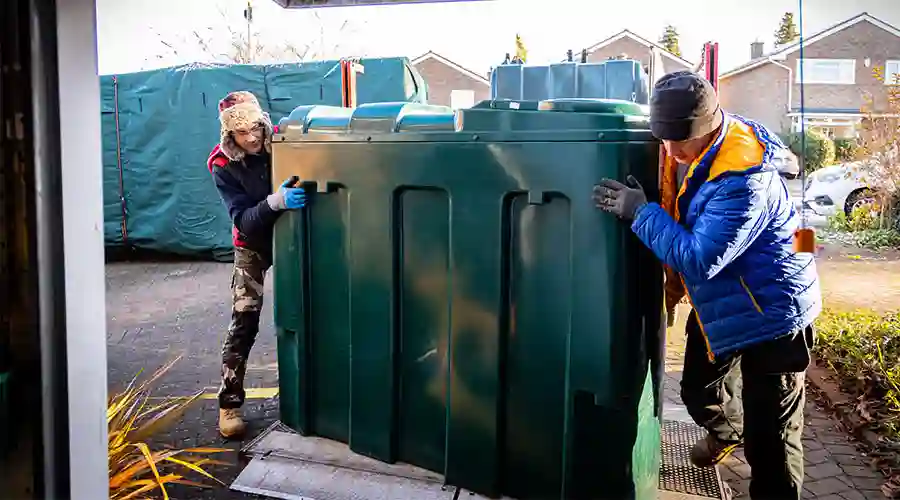Beneath the tranquility of a well-manicured lawn or nestled amidst the roots of old trees, a hidden threat often lurks – the aging underground oil tank. As homeowners embark on the transformative journey of oil tank removal, they navigate a process that transcends the physical extraction of metal; it’s a journey from potential environmental hazard to a cleaner, safer property. In this exploration, we follow the intricate steps of the journey from dirt to clean, shedding light on the multifaceted process of oil tank removal.
Discovery and Assessment:
The journey begins with the realization that an underground oil tank, often forgotten over the years, poses potential risks. Homeowners engage in a process of discovery, recognizing the need to assess the condition of the tank and evaluate potential environmental and safety concerns. This initial step sets the stage for the comprehensive journey ahead.
Environmental Impact Evaluation:
Before the physical removal commences, an environmental impact evaluation takes center stage. Professionals assess the potential risks associated with the removal process, considering factors such as soil contamination and the impact on nearby ecosystems. This evaluation is critical not only for regulatory compliance but also for minimizing the ecological footprint of the removal.
Navigating Regulatory Waters:
Oil tank removal is entwined with a complex web of regulations that vary by location. Homeowners must navigate this regulatory landscape, securing the necessary permits and adhering to local guidelines. The journey involves meticulous preparation, as homeowners compile documentation, submit applications, and collaborate with regulatory authorities to ensure compliance.
Choosing the Right Team:
Recognizing the intricacies of oil tank removal, homeowners wisely opt for the assistance of professionals. Selecting the right team of experts is a pivotal decision, encompassing professionals who possess both technical proficiency and a deep understanding of local regulations. The collaborative efforts of environmental consultants, removal specialists, and regulatory experts contribute to a smoother journey.
Pumping and Cleaning:
With the groundwork laid, the physical journey begins. The first task involves pumping out any remaining oil from the tank. Specialized equipment is employed to ensure a thorough extraction, and the tank is meticulously cleaned to mitigate the risk of spills during the subsequent removal stages. This step transforms the tank from a vessel of potential hazard to an emptied shell.
Excavation:
The heart of the journey lies in the excavation phase. Heavy machinery is called into action as the underground tank is carefully unearthed. This delicate process requires precision to avoid damage to the tank and prevent any potential spills. As the tank emerges from its subterranean hiding spot, the landscape transforms, revealing the hidden relic.
Tank Removal and Disposal:
The culmination of the journey occurs with the physical removal of the tank. Lifted from its underground abode, the tank is extracted and prepared for disposal. The removal process adheres to strict guidelines, ensuring that the tank is handled responsibly and in compliance with environmental regulations. The once-buried artifact is now on its way to proper disposal, marking a definitive transition from a potential environmental threat to a safely managed waste.
Environmental Remediation:
In cases where soil contamination is detected during the journey, the next step involves environmental remediation. This crucial phase is akin to the process of healing the land, as contaminated soil is removed and replaced with clean soil. The journey, which began with the potential risk of soil contamination, concludes with the restoration of environmental balance.
Verification and Documentation:
As the dust settles, a final inspection is conducted to verify that all regulatory requirements have been met. This includes documentation of the removal process, permits, inspection reports, and any additional records required by local authorities. The journey is now documented, serving as a testament to the commitment to environmental stewardship.
Property Transformation:
The journey from dirt to clean is not merely a physical transformation but a holistic metamorphosis of the property. With the removal complete and the environmental risks mitigated, homeowners witness the tangible improvement in the safety and cleanliness of their property. The landscape that was once shadowed by the potential hazards of an aging oil tank now stands as a testament to responsible homeownership.
In essence, the journey of oil tank removal is a narrative of transformation – from the discovery of hidden dangers to the meticulous planning, compliance with regulations, and the physical extraction of the tank. It is a journey that underscores the importance of environmental consciousness, regulatory diligence, and the commitment to safeguarding both property and ecosystem. As homeowners navigate the path from dirt to clean, they contribute not only to the well-being of their property but also to the broader goal of environmental preservation.



